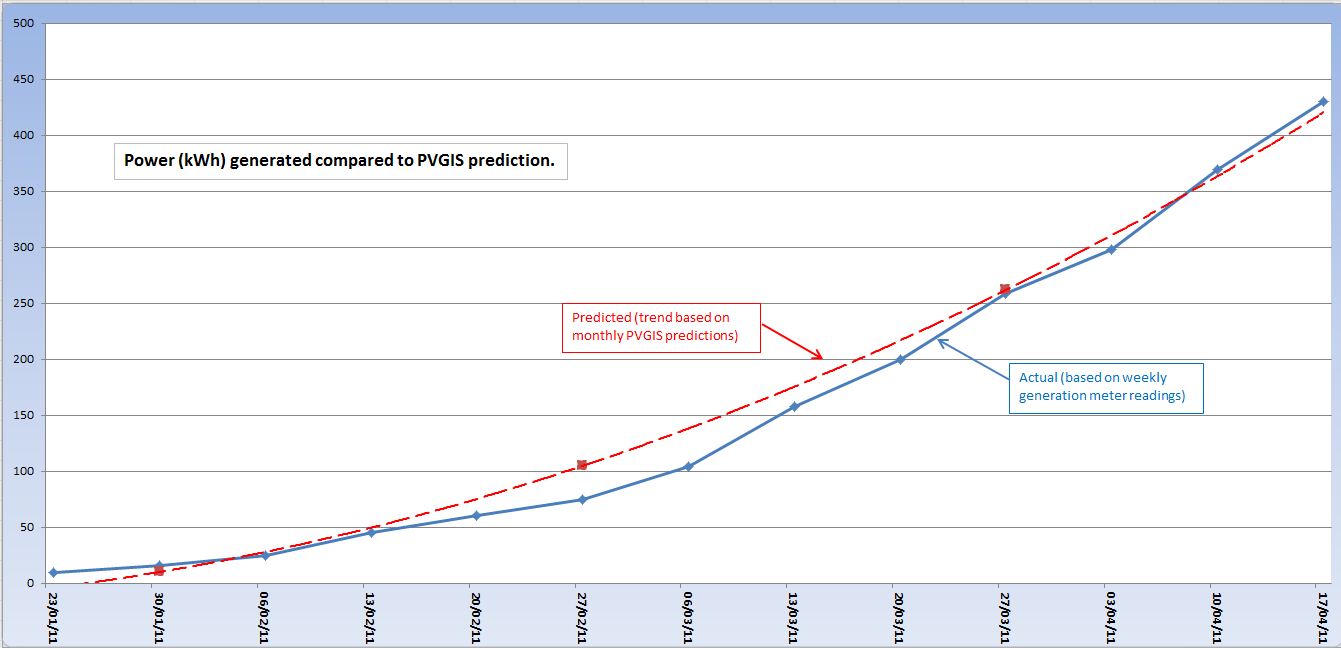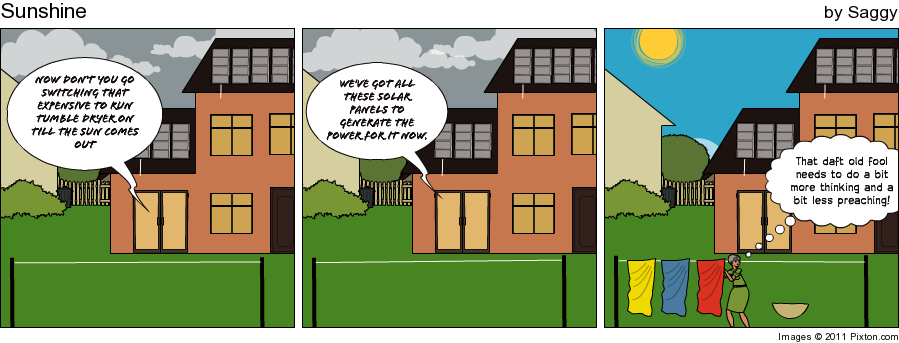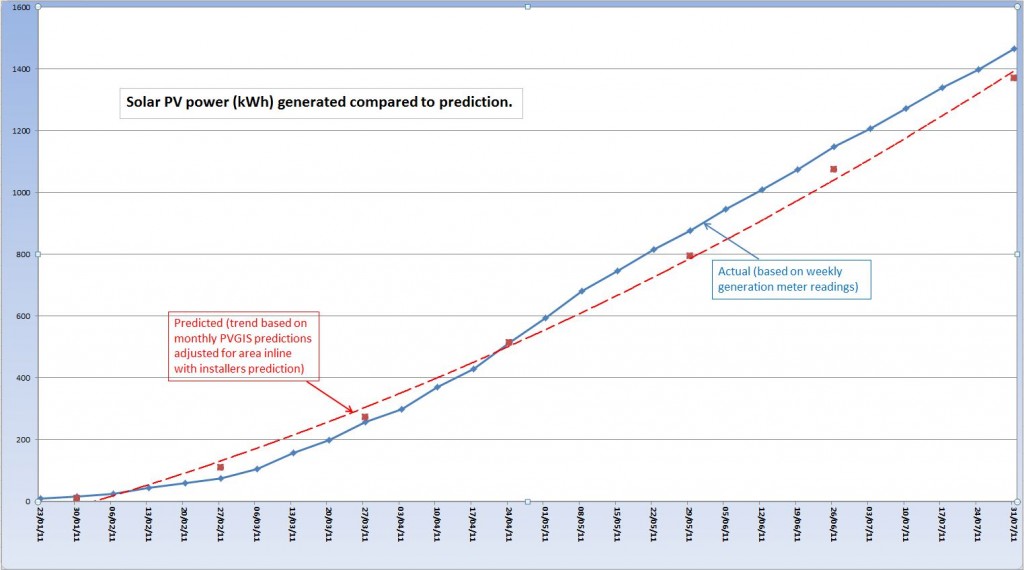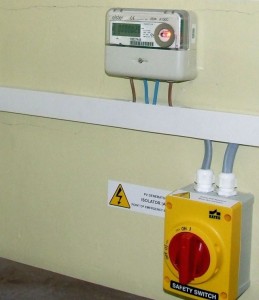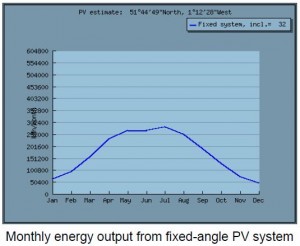It is 3 months since our solar photovoltaic arrays were commissioned so, while it’s much too soon to say whether they were a good idea in the long run, I thought I’d write a review of how they were doing so far.
Firstly it’s worth mentioning that they’ve been no trouble – no blowing fuses or bits falling off or leaking roof or anything. I used the fact that we’d had to clear out the meter cupboard as incentive to get rid of the old and useless spare loo in there and put up some shelves instead so we are in slightly less of a mess than before if anything.
Getting registered for the feed-in tariff has been a bit of a faff though. I decided the simplest thing was to register with Scottish Southern Electric in Jane’s name as they are our current supplier and Jane’s name is on the bill. I downloaded the simple form from their website, filled it in and emailed it to the address given with the MCS certificates etc. Meanwhile Solar PVE, the installation company, informed Southern Electric DNO as they are required to do. Despite having requested acknowledgement of my email we’d heard nothing after 2 weeks so I printed out hard copies and posted them off with a covering note to make sure they recieved it.
A couple of weeks later I got the forms sent back to me with a letter claiming that the figures on the certificate didn’t agree with those on the application form and also claiming the date of application I’d given was wrong. The figures appeared identical to me and it was obvious they had mistakenly treated the day they received the hard copy as the day of application rather than the date of the preceding email. Anyway I phoned up and talked to a helpful chap who agreed someone had got it wrong, explained that they were having to train up several new staff, and said he’d sort it out his end but I should also post the forms back with an explanatory note to cover all angles which I did.
Meanwhile, after a few dull and rather unproductive weeks, the sun came out. Early afternoon on a sunny day early in March and we seemed to be generating about 1.7 kW, two thirds of the quoted maximum, which seemed about right what with the sun still low and distant. We weren’t using that much electric a lot of the time though and I was rather surprised to find that our old style ‘spinning wheel’ consumer meter was regularly spinning backwards and lowering the reading on which we are billed.
This was an unexpected bonus but, not wanting to be accused of theft of electric, I thought I best let the suppliers know. I phoned and a helpful lady said she’d pass on the message to the appropriate dept and I would be contacted in 3 to 5 days. A week later, hearing nothing, I phoned again, the microgeneration dept this time, and was told yes they had a record of my previous call and yes they’d need to change my meter for a digital one and I would hear from them in 3 to 5 days. That was 3 weeks ago, we’ve written and emailed since but in the end it’s their problem, not ours, that we appear to have used absolutely no electric since March!
Anyway, after a bit more fuss where SSE requested a pretty irrelevant amendment to the MCS Cert direct from our installers, we have just last week received the letter of confirmation that our system is now on the national FiT register and also our contract to sign which is almost ok except they’ve spelt Jane’s surname wrong so we’ve pointed out that they better get it right before sending us a cheque. The date they owe us from is correct and we’re hopeful of a payment soon.
But is the system actually making electric? Yes it is – and lots. We’ve been having many nice sunny days and despite a bit of a slow start I now reckon we have generated very slightly more in total than the PVGIS web thingy predicted. The chart below compares our actual generation figures (blue) to a curve based on the PVGIS monthly total predictions adjusted for location, aspect etc (red). About 420kWh so far and the next few months should be a lot higher before generation drops right off next winter. So far so good!
